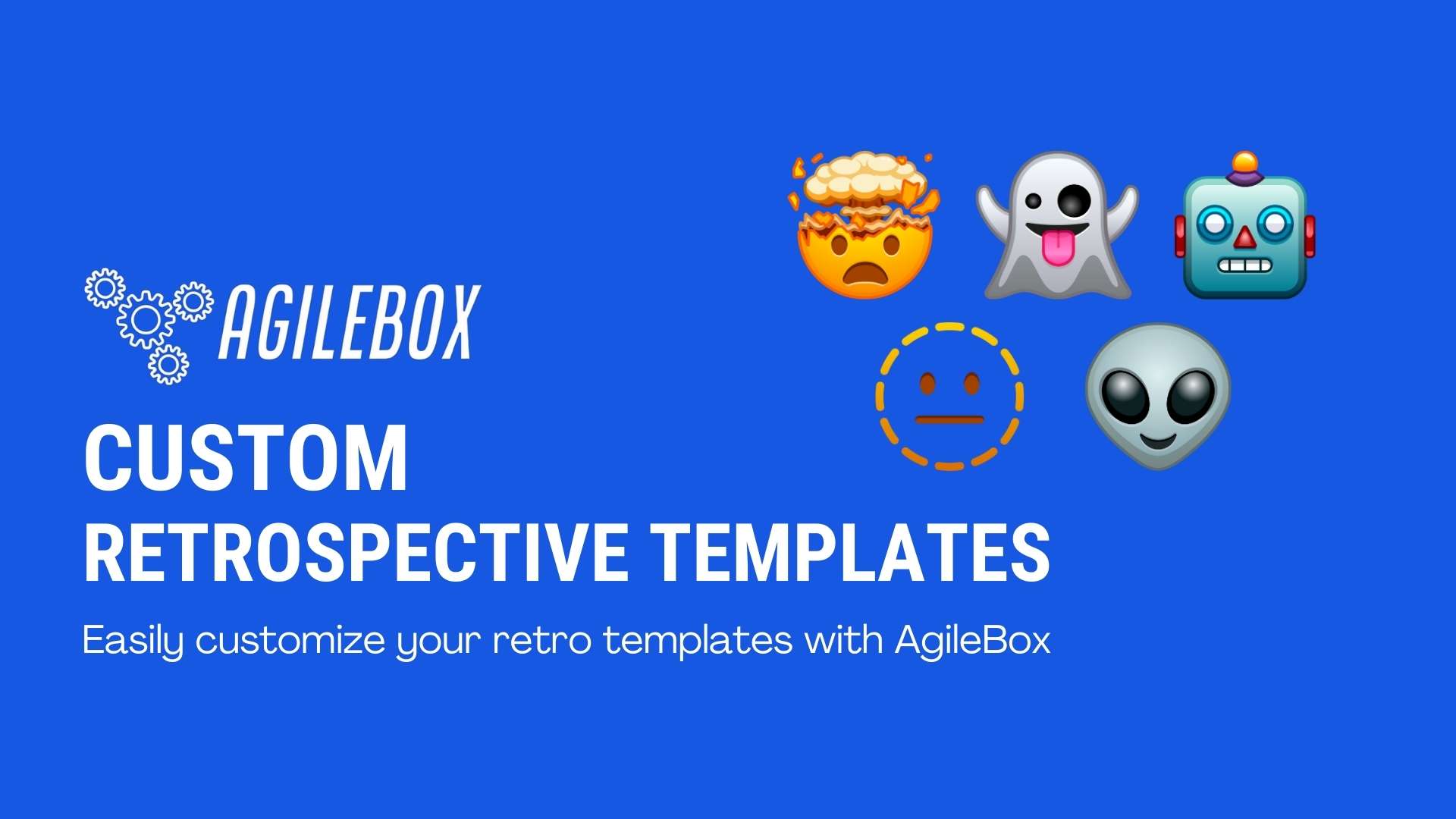In the ever-evolving landscape of agile methodologies, continuous improvement is the key to success. AgileBox empowers your team to excel by offering the ability to create custom retrospective templates tailored precisely to your needs and goals.
By considering your team’s unique context, dynamics, the balance of positives and negatives, and the focus on actionable items, you can ensure that your retrospectives become powerful tools for growth and development.
What is Custom retrospective template?
A retrospective, often referred to as a “retro”, is a meeting held after a product delivery or sprint in agile methodologies. This is where team members review the process to determine what went well and what can be improved.
A custom retrospective template is tailored to the specific needs and preferences of a team. While there are common retrospective formats like “Start-Stop-Continue” or “Mad-Sad-Glad,” teams often adapt or create their own templates to suit their unique circumstances and objectives.
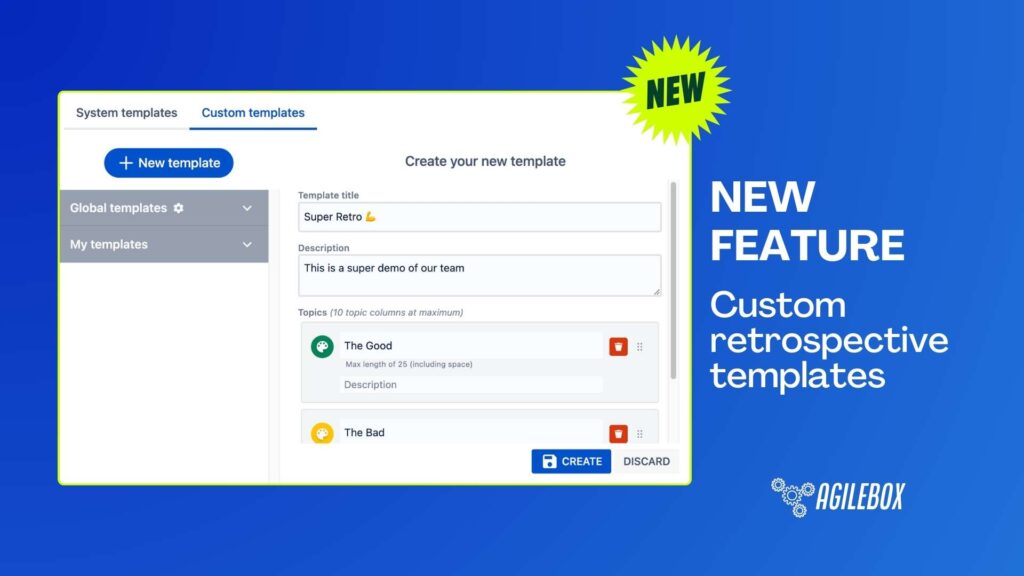
The purpose of a custom template is to guide the discussion and ensure that the team addresses the most relevant issues and opportunities for improvement.
Advantages of custom template
Custom retrospective templates offer several advantages when compared to common or generic retrospective formats.
- Tailored to Team’s Needs: Custom templates are designed to align with the specific needs, challenges, and goals of a particular team or project. This means they can address issues that may be unique to that team, making the retrospective more relevant and actionable.

- Focused Discussions: By customizing the template, you can emphasize certain aspects of the retrospective that are most critical at a given time. This helps in keeping the discussions focused and relevant.
- Improved Engagement: Team members are more likely to engage and participate in a retrospective when they feel it is designed specifically for them. Custom templates can enhance team engagement and ownership of the process.
- Encourages Creativity: Custom templates can include creative elements or exercises that stimulate innovative thinking and problem-solving. This can be particularly useful when a team is looking to break out of a rut or address complex issues.
- Ownership: Teams that create and use custom templates often feel a stronger sense of ownership over the retrospective process. This can lead to increased commitment to follow through on action items.
- Adaptation to Culture: Some teams have unique cultural aspects or dynamics that can be better addressed through custom templates. This ensures that the retrospective aligns with the team’s culture and values.
Teams should regularly review and refine their custom templates to ensure they continue to meet their evolving needs.
What to consider when creating a custom template
Creating a custom retrospective template can be a valuable process, but it’s essential to consider several key factors to make it effective and beneficial for your team.
Here are four of the most important things to keep in mind when creating a custom retrospective template:
Team’s Goals and Objectives
Understand the specific goals and objectives of your team or project. What are you trying to achieve, and what challenges are you facing? Tailor the retrospective template to address these goals and challenges directly. Ensure that the template encourages discussions that align with your team’s objectives.
Team Dynamics and Culture
Consider your team’s unique dynamics, culture, and communication styles. Are there any cultural norms, values, or preferences that should be taken into account when designing the template? The template should support open and constructive discussions within your team’s context.
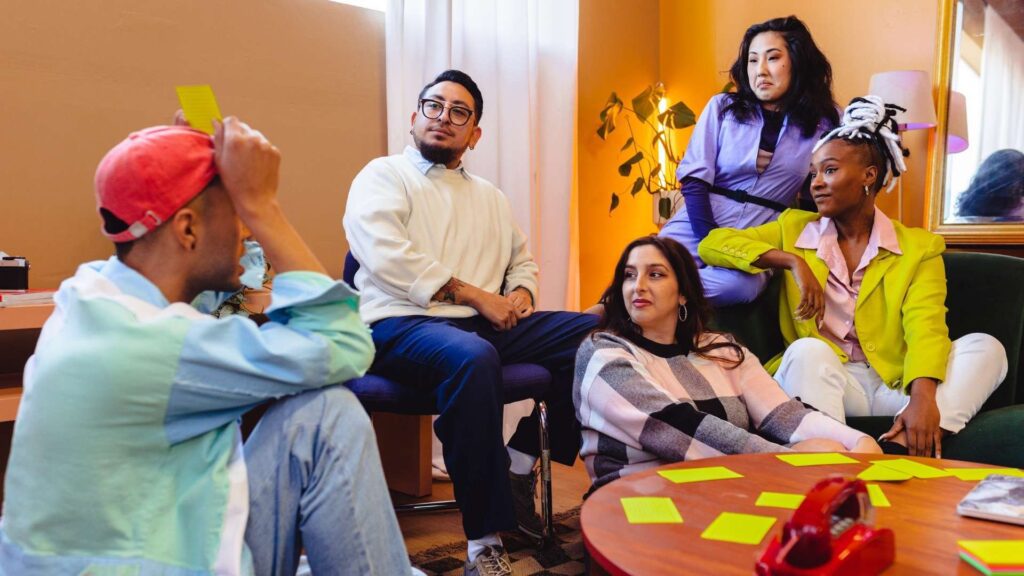
Balance of Positives and Negatives
Create a template that strikes a balance between celebrating successes and identifying areas for improvement. Acknowledging what went well and building on those strengths is important, but it’s also crucial to address challenges and issues that require resolution. Ensure that the template provides space for both positive and negative feedback.
Actionable Items and Follow-Up
The retrospective should lead to actionable items and concrete improvement plans. Design the template in a way that encourages the team to identify specific action items, assign responsibilities, and set deadlines. Without actionable outcomes, the retrospective may not result in meaningful change.
Start using retrospective custom templates with AgileBox
This October, AgileBox already can create the custom template for the retrospective meeting. The team now can create unique templates based on their needs within Jira.
Follow these steps to create the custom templates:
1. Find the Retrospective feature
Download and access the AgileBox app in your Jira projects.
Navigate to the Retrospective option on top of the plugin.
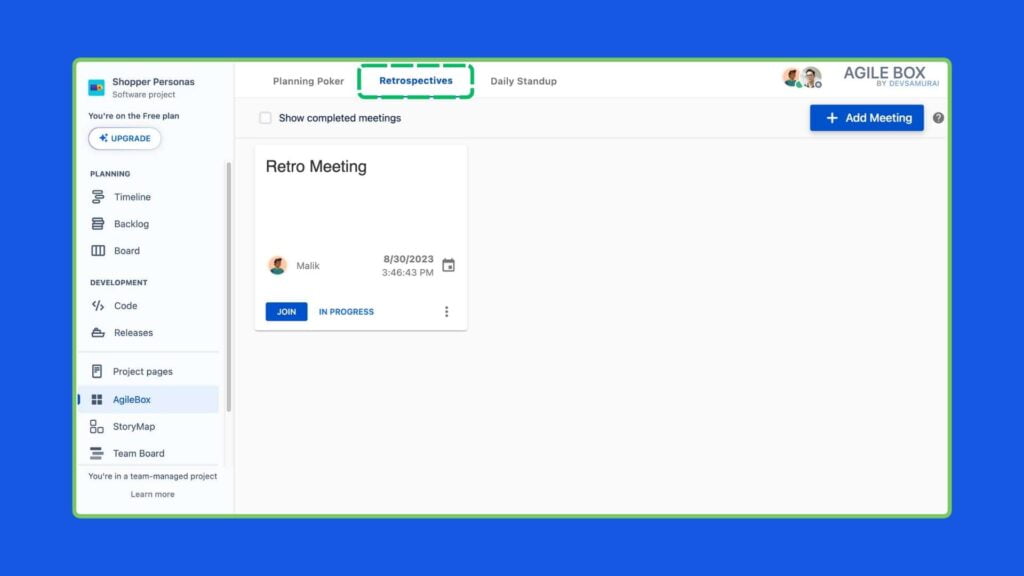
2. Go to the template option
Click on the Add meeting button then find the template in the Template option.
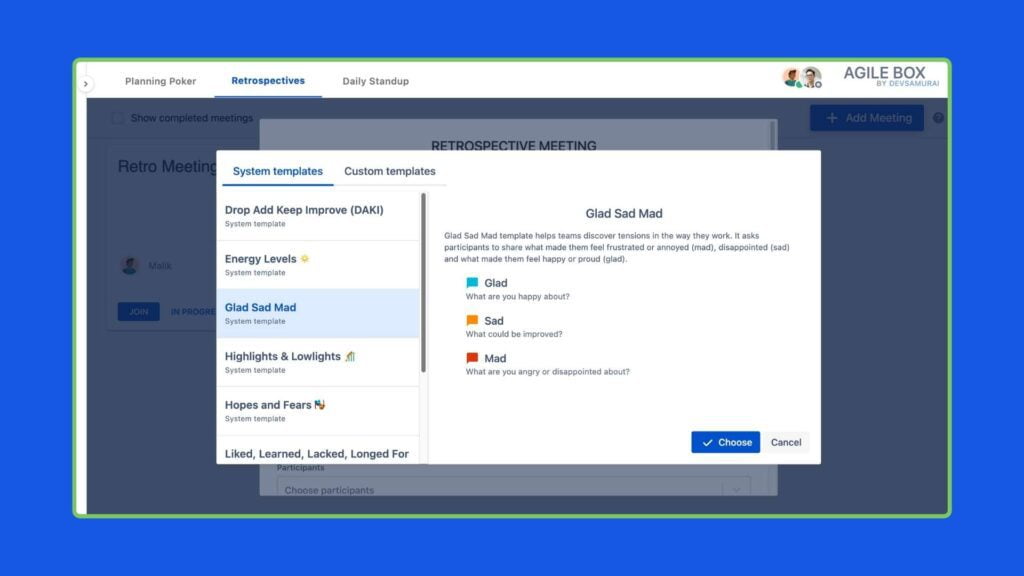
3. Create new Custom templates
Go to the Custom templates option then click on the New template button to create a new one.
Fill out the information:
- Template title: Choose the title for your template
- Description: Write more about your template
- Topics: Here you can change color, topic name, description, and add a maximum of 10 topic columns
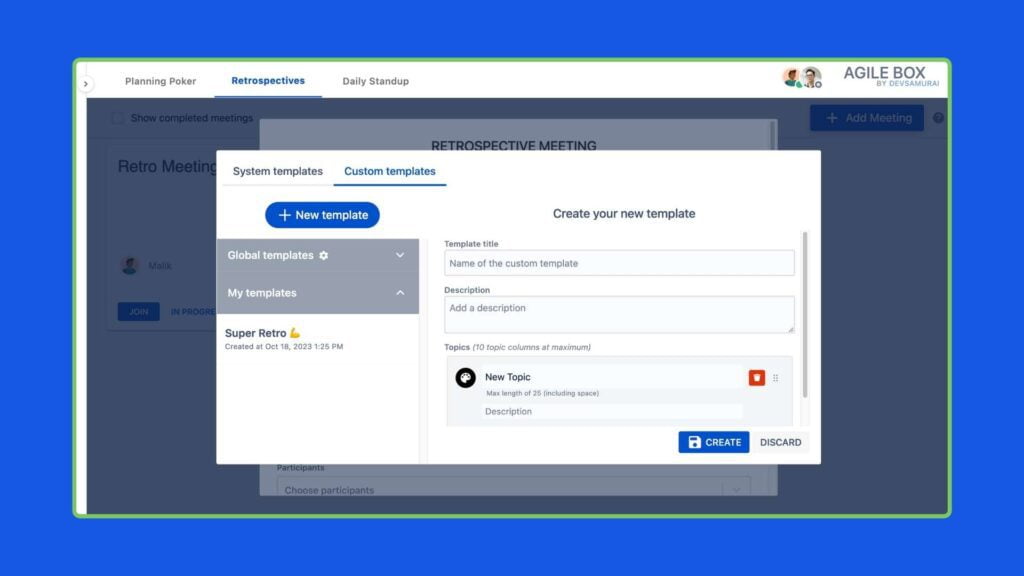
Click Create to finish creating the new template, your new template will be available in the My templates option.
By creating the new template this way, your template will remain within your project and can’t be used for others. To create a template that is available for many projects, go to the App setting in the AgileBox when accessing from the Apps menu. (Only Jira admins can do this)
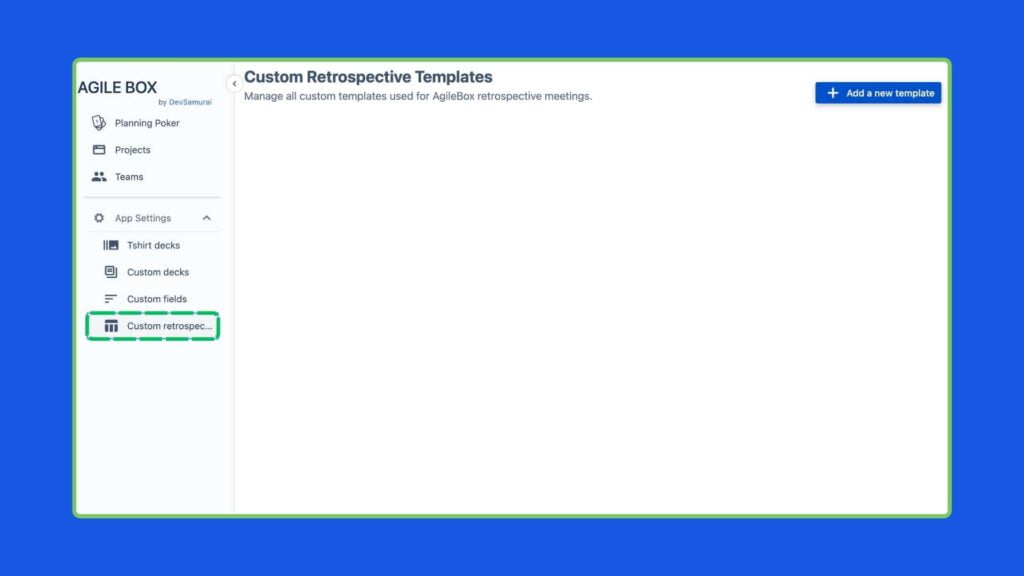
4. Use your custom template
Browse and choose your template from the Custom template option.
Then, fill in all the required fields and enter your recently created meeting.
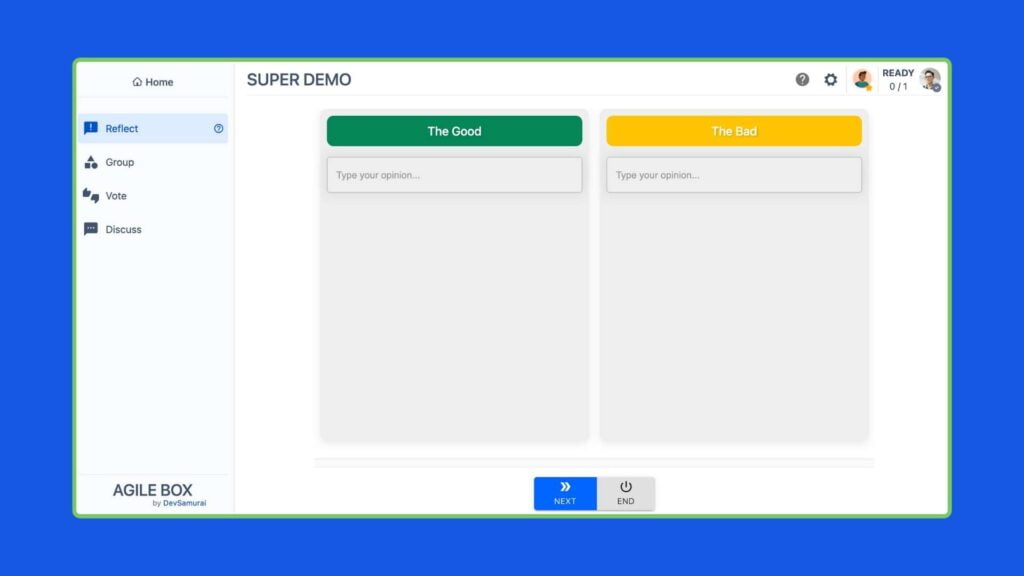
Now, good luck with your retro meeting! 😉
Sum Up
Start your journey with AgileBox and unlock the potential of custom retrospective templates. With AgileBox, you can create, customize, and implement retrospectives effortlessly within Jira.
Follow our simple steps to create your unique templates, and remember, your journey to excellence begins with reflection and adaptation. Good luck with your next retrospective meeting; let’s make it a success! 😉

